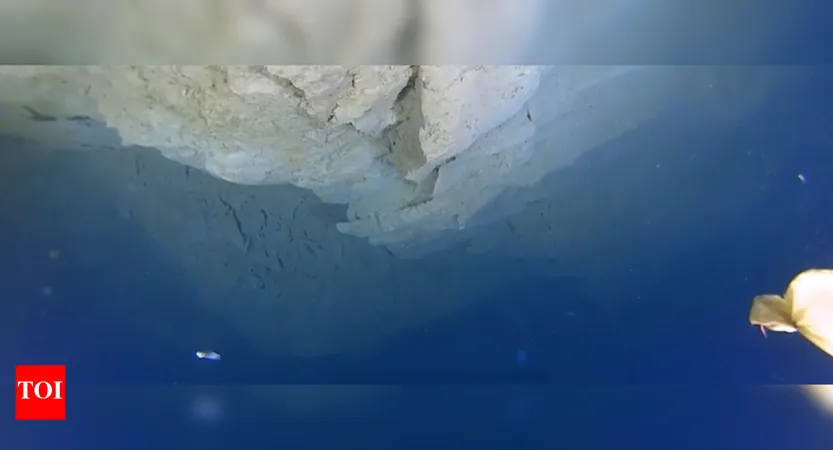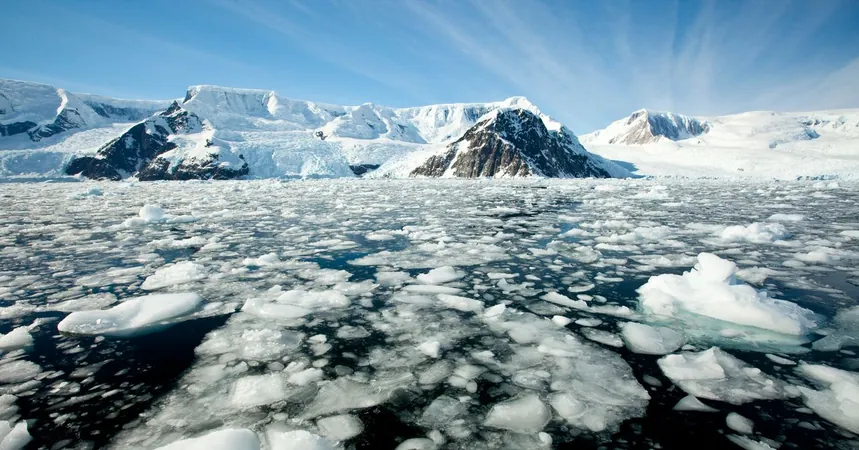
Diving into Disaster: Shocking Discoveries from Japan's Deep-Sea Drilling!
2025-08-30
Author: Amelia
Unearthing Secrets Beneath the Waves
In a groundbreaking expedition, scientists have plunged into the depths of the Japan Trench, aiming to uncover the mysteries behind the catastrophic 2011 Tōhoku earthquake and tsunami. This ambitious mission, known as the IODP Expedition 405 or JTRACK, seeks not just to understand the fault's behavior but also to shed light on the dynamics that trigger colossal tsunamis.
A Journey to the Heart of the Fault
Between September and December 2024, the Japanese drilling vessel Chikyu—renowned as the world’s most advanced deep-sea drilling ship—has become the vessel of hope for thousands. In a quest that sees 60 scientists drilling almost seven kilometers beneath the Pacific Ocean, they are probing the very fault that unleashed one of history's most devastating tsunamis.
Drilling into the Depths
The researchers have focused their efforts on the 'décollment' layer, the fault's base where seismic slippage initiates. From this profound abyss, they have extracted core samples from over 800 meters below the ocean floor. These precious samples provide a fascinating glimpse into the geological conditions that triggered the disaster.
Monitoring for Future Events
This expedition goes further than mere sampling; it includes the installation of a long-term borehole observatory that will track temperature and fluid pressure at the fault site. These ongoing measurements are essential for deciphering how the fault behaves over time and for predicting future seismic activity.
What Lies Beneath: Analyzing Core Samples
The scientists have been analyzing core samples regularly, uncovering crucial evidence of past earthquakes, tsunamis, and underwater landslides. Notably, layers rich in specific clay minerals—known to facilitate fault slippage—were discovered, revealing the geological complexities at play beneath the ocean.
Global Implications Beyond Japan
What makes this expedition particularly significant is its contributions to understanding seismic risks not just in Japan, but also in other earthquake-prone regions like Chile, Alaska, and Indonesia. These insights can help prepare coastal communities around the globe for potential disasters.
Healing Faults: A Double-Edged Sword?
Initial findings suggest that the fault's rock formations, damaged during the 2011 earthquake, may have partially re-cemented over time. While this healing could reduce fluid movement, it may also be storing mechanical energy, potentially setting the stage for future seismic events. Understanding this 'healing' process is imperative for anticipating and mitigating seismic risks.
Stay Tuned for More Groundbreaking Discoveries!
As the JTRACK expedition continues, researchers remain hopeful that their findings will not only equip us to better predict earthquakes but also enhance safety measures for vulnerable communities worldwide. Stay connected for further updates on these pivotal discoveries!









 Brasil (PT)
Brasil (PT)
 Canada (EN)
Canada (EN)
 Chile (ES)
Chile (ES)
 Česko (CS)
Česko (CS)
 대한민국 (KO)
대한민국 (KO)
 España (ES)
España (ES)
 France (FR)
France (FR)
 Hong Kong (EN)
Hong Kong (EN)
 Italia (IT)
Italia (IT)
 日本 (JA)
日本 (JA)
 Magyarország (HU)
Magyarország (HU)
 Norge (NO)
Norge (NO)
 Polska (PL)
Polska (PL)
 Schweiz (DE)
Schweiz (DE)
 Singapore (EN)
Singapore (EN)
 Sverige (SV)
Sverige (SV)
 Suomi (FI)
Suomi (FI)
 Türkiye (TR)
Türkiye (TR)
 الإمارات العربية المتحدة (AR)
الإمارات العربية المتحدة (AR)